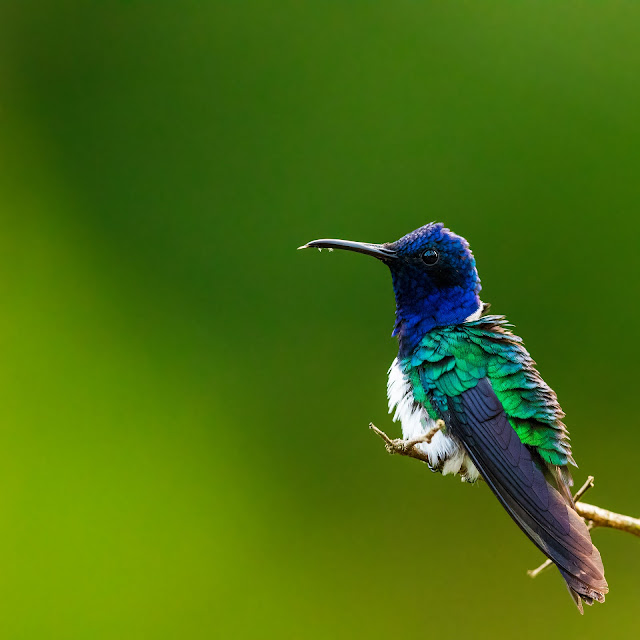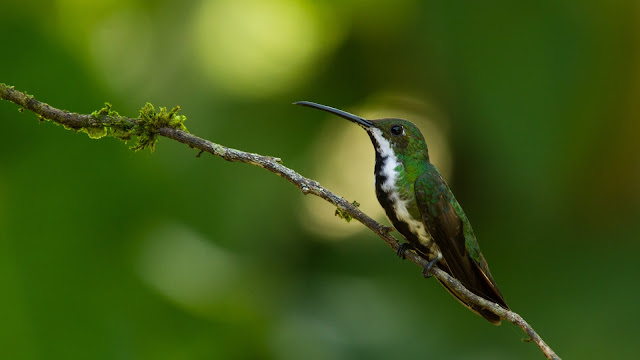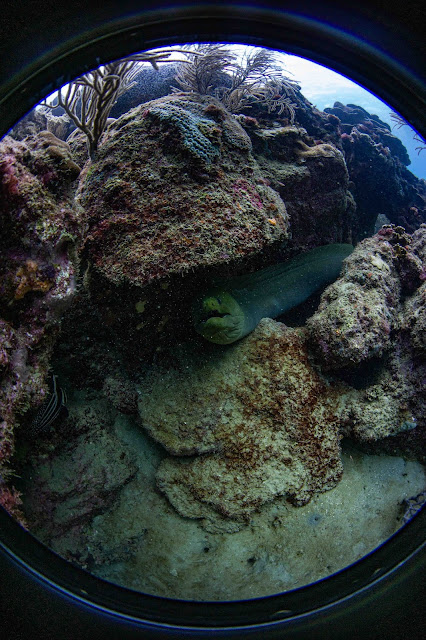Masquerading as Male: survival strategies of hummingbirds
Faraaz Abdool tells us about female hmmingbirds dressed as male, and another bird where some males dress as female. All photos by Faraaz Abdool
In this age of polarising perspectives and the politicising of even the most benign things, nature proceeds as she always has - not according to our self-imposed rigid rules. After all, our understanding of nature is premised on observation, and if we observe more, we understand more. Problems arise when we take what we already know and assert that that is all that needs to be known. Nature is fluid, academic categorisation isn't - and so we need to remain open and willing to learn. Prime example is the rewriting of astronomy textbooks after analysing observations from the James Webb telescope in 2024. Without this willingness to accept that we still don’t understand the full gamut of existence, we are destined to stagnate in ignorance.
In the world of birds, we constantly learn via observation. Species we acknowledge as being socially complex attract more attention from us, and we are predisposed to accept that their lives have more details to be unraveled. The Ruff - a shorebird from the eastern side of the Atlantic, for example - has a complicated courtship and breeding behaviour that shows three separate types of males, each with specific strategies to pass their genes on to the next generation. These are the external manifestations: the large, ornately plumaged "typical" males, smaller "satellite" males that serve in the entourage of the conspicuous males, and a third type of male with a gene inversion that has led to their looking like females while retaining their (actually enlarged) testes. Female Ruffs may mate with any of these three versions of males.
 |
| The Ruff is a fairly large shorebird that only occasionally wanders across the Atlantic to T&T. |
Here in the Neotropics, we observe variations in some species that we are just beginning to understand. Arguably more difficult to study than shorebirds, hummingbirds fascinate with their fast-paced lifestyle. While many species of these winged jewels have elaborate courtship rituals, these often unfold high in the forest canopy or too quickly for us to raise our binoculars (or close our mouths in amazement). These fleeting moments aren't easy for those of us taking notes. With determination, however, we've unlocked new information about some of the more common species.
Female birds wearing Male Plumage
The White-necked Jacobin is a conspicuous and aggressive resident of Central and South America. Due to the high frequency of observation as well as the clear sexual dimorphism exhibited, keen observers noted that some females took on the plumage of males. Researchers studying this species in Panama noted that nearly 30 percent of female White-necked Jacobins caught and sexed between 2015 and 2019 were in full adult male plumage. Some scientists have suggested that female White-necked Jacobins look like males in order to avoid social inter- and intra-specific bullying at communal food sources. How males ignore a disguised female at a food source, yet recognise her when it is time to copulate is another mystery altogether.
 |
| In general, the White-necked Jacobin is a polymorphic species, with distinct plumages for adult males, females, and juveniles. Pictured here is one in the typical vibrant adult male plumage. |
Further studies have found the same phenomenon in several other species of hummingbirds, including less aggressive ones, suggesting that female ornamentation is driven by something other than what determines male ornamentation. We've long accepted that ornate and extravagant male birds look that way due to sexual selection, but the prevalence of female-limited polymorphism whereby some females don male plumage is encouraging us to look to other socioecological factors for explanation.
The thinking that birds (and all other animals) are mindless, non-sentient, binary creatures is something of the past, especially as new information indicates their complex and self-determined lives. There’s more than meets the eye with social factors at play. These birds are not simply flying around, feeding, mating, and dying for our entertainment. They have complex lives of their own, whether we perceive them or not.
The Case of the Black-throated Mango Hummingbird
Surely with the passage of time and more birders observing and documenting birds in their rapidly changing habitats, we are bound to witness more behaviours that challenge conventional knowledge. Now that we know that female the White-necked Jacobin sometimes wear male plumage, what do we make of the male-plumaged Black-throated Mango seen raising a brood of its own in central Trinidad.
It cannot be confirmed that it was a female bird, but there is no formal record of any male hummingbird of any species having the slightest interest in nest-building, incubating, or any role whatsoever in the raising of young. Despite some anecdotal accounts of males taking part in incubation, there is not enough evidence to conclude that there is male involvement. Some male hummingbirds have been noted to stand guard near to where the female has built the nest, occasionally chasing away intruders - but this may be attributed to their instinctive aggression rather than nest defence, as many hummingbirds are polygamous and do not have any particular attachment to a single mate.
This particular Black-throated Mango that was observed for several weeks was seen interacting with another male-plumaged Black-throated Mango on occasion. There was never a female-plumaged Black-throated Mango in the vicinity. Over the course of this time, both eggs hatched, and eventually tiny beaks were seen over the rim of the nest until both hatchlings grew almost too large for the nest - at which point they left their first home, never to return.
There have been four previous records of male-plumaged Black-throated Mangos on nests, two on Trinidad, one on Tobago, and one in Brazil. For this species, I was unable to find any information on the percentage of females that exhibit male plumage, but at the very least it is encouragement for further observation. The Black-throated Mango is a strongly sexually dimorphic species, but unless caught and sexed, there is little one can do to definitively state that one is male and the other is female.
 |
| A "typical" female Black-throated Mango is mostly green with a conspicuous white-bordered black throat stripe. |
 |
| A male-presenting female Black-throated Mango incubating eggs. |
 |
| The young hummingbirds are fed a high protein mixture of insects (mainly mosquitoes) and nectar. |
 |
| Within two weeks of hatching, the young birds find it difficult to hide in the nest. |
 |
| Wings are stretched and exercised in the days leading up to the first flight. |
References
https://phys.org/news/2024-06-jwst-rewriting-astronomy-textbooks.html
https://royalsocietypublishing.org/doi/full/10.1098/rspb.2020.3004#d1e1477
https://www.nationalgeographic.com/animals/article/why-some-female-hummingbirds-masquerade-as-males



